For this project, our client wanted to source new ideas and discover new potential markets for their indoor gardening kits. Given the squeezed timeline of four weeks for the project, we decided to take the "tripe diamond approach" diverging and converging each week to develop a touchpoint.
Approach
Triple Diamond approach
Daniel outlining the problem space
Systems Mapping
Systems Map
Week 1
We began our research by mapping the existing food system in the United States including major organizations, policies and companies involved in ensuring food reaches from farm to table. We then zoomed in the food system in urban areas with New York City as our example to understand existing gaps and leverage points in the system. This was supplemented with remote user interviews with ten individuals ranging from students to retired professionals to understand perceptions and behaviors around indoor garderning.
Problem and Framework Definition
PEECN Framework
Week 2
Based on the initial user research, we developed a framework that summarized the key insights from the interviews and informed what aspects of the indoor gardening experience we should focus on in our first set of prototypes. Our client was impressed by the framework and problem identification and their feedback was to ensure that the product design is affordable, accessible, and adaptable to different urban environments.
Prototyping and Testing Assumptions

Vertical Hydroponic System
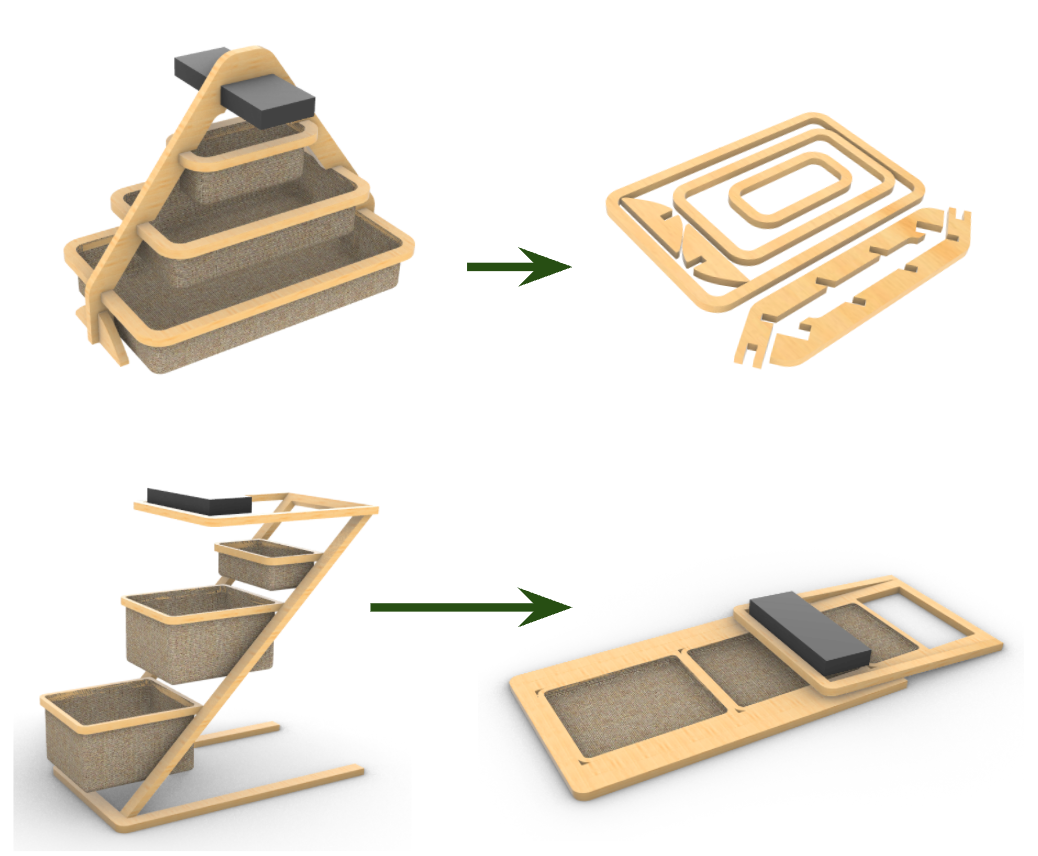
Flat pack design
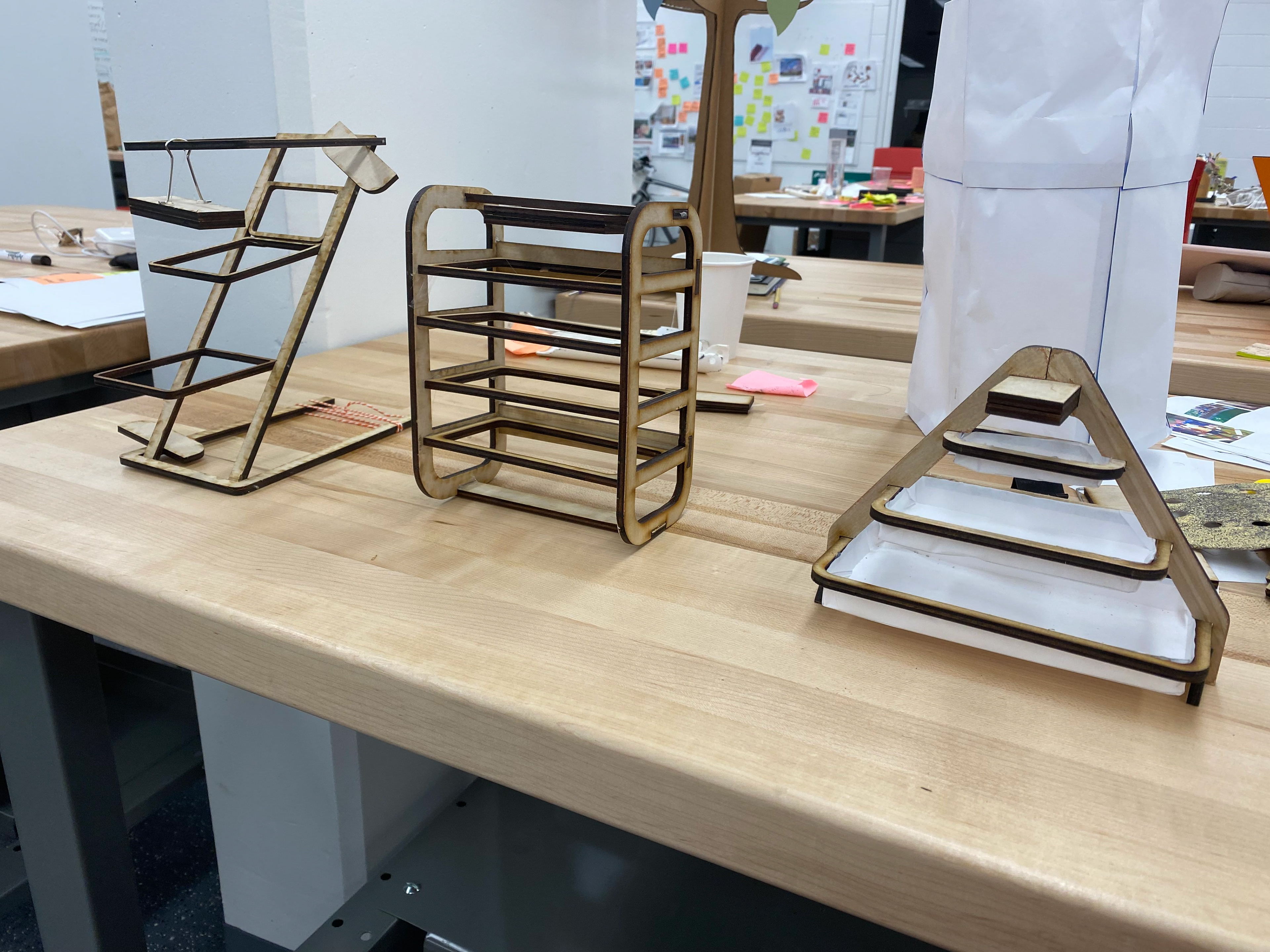
Laser-cut models of first set of prototypes for EverGreen
Week 3
We went back to the drawing board and developed different iterations of what would an affordable, accessible, and adaptable indoor gardening kit that enables a PEECN experience look like. Our iteration ranged from a vertical grow kit that uses hydroponics to renderings and laser cut models of flat-packable designs.
Based on our client feedback and reflections, we realized that we were still missing input of professional gardeners which motivated us to take a field trip to a local community garden.
We did at length interviews with Kevin Rabbit, the master gardener at Roger Williams Park Community Garden and Kim Roberts, a volunteer at the community garden. Our interactions revealed an existing gap within the food security nexus during the winter months which guided the next stage of our iteration.
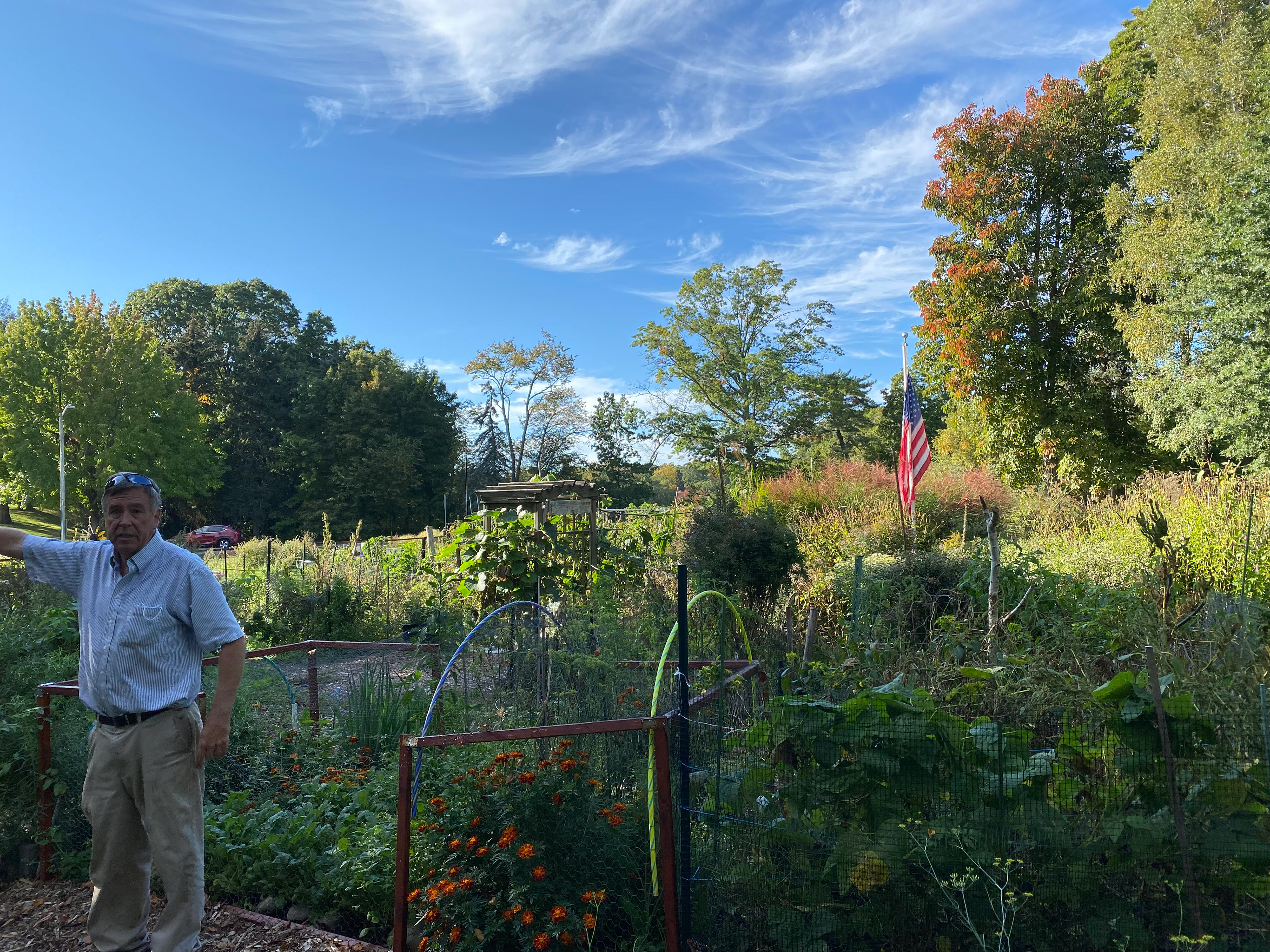
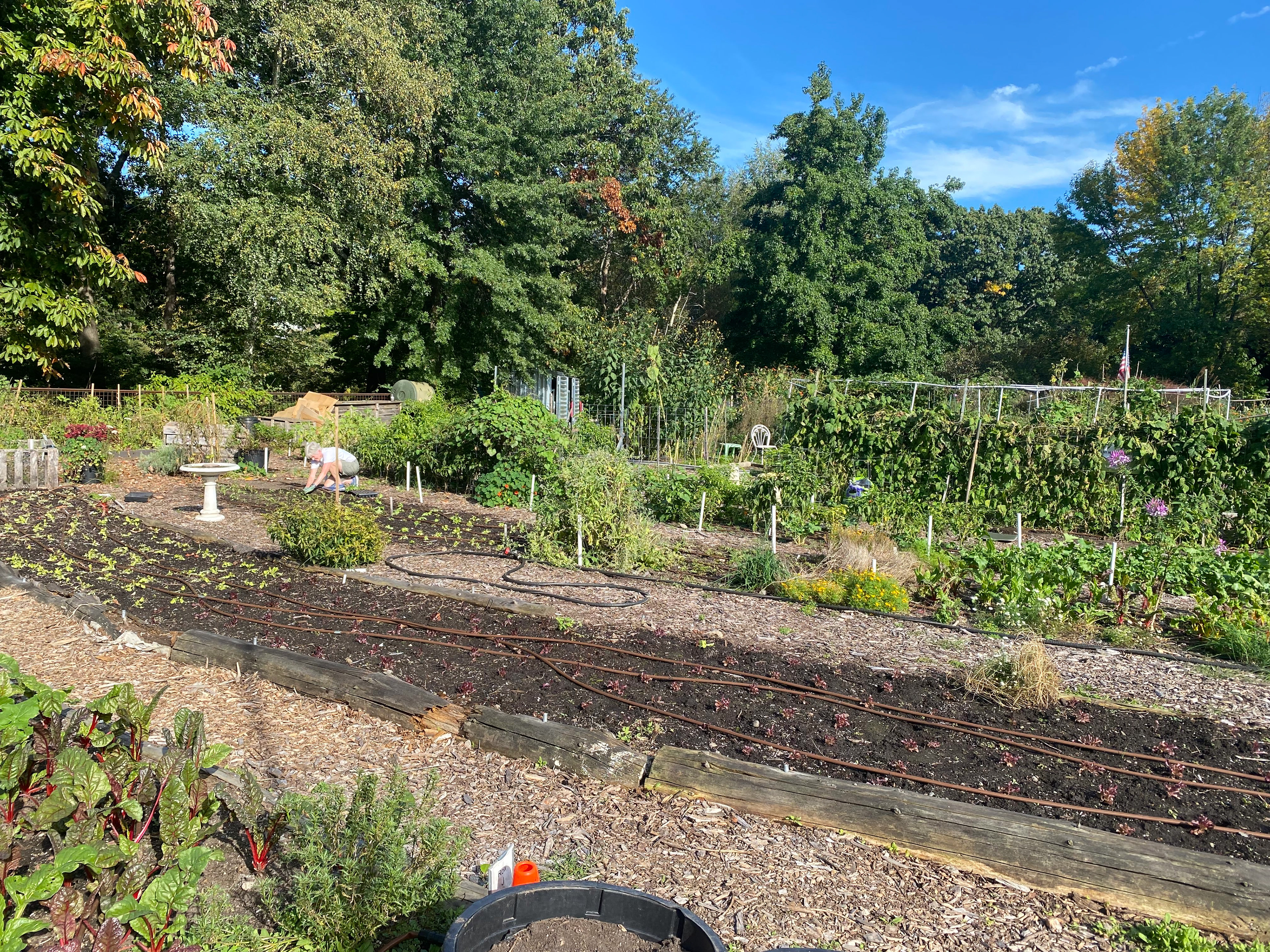
Snapshots from field research at Roger Williams Park Community Garden
We took the insights from our interactions and created the systems map of the community garden to visualize the existing gaps and articulate our touchpoint within the system.
System between April - October System between November - March
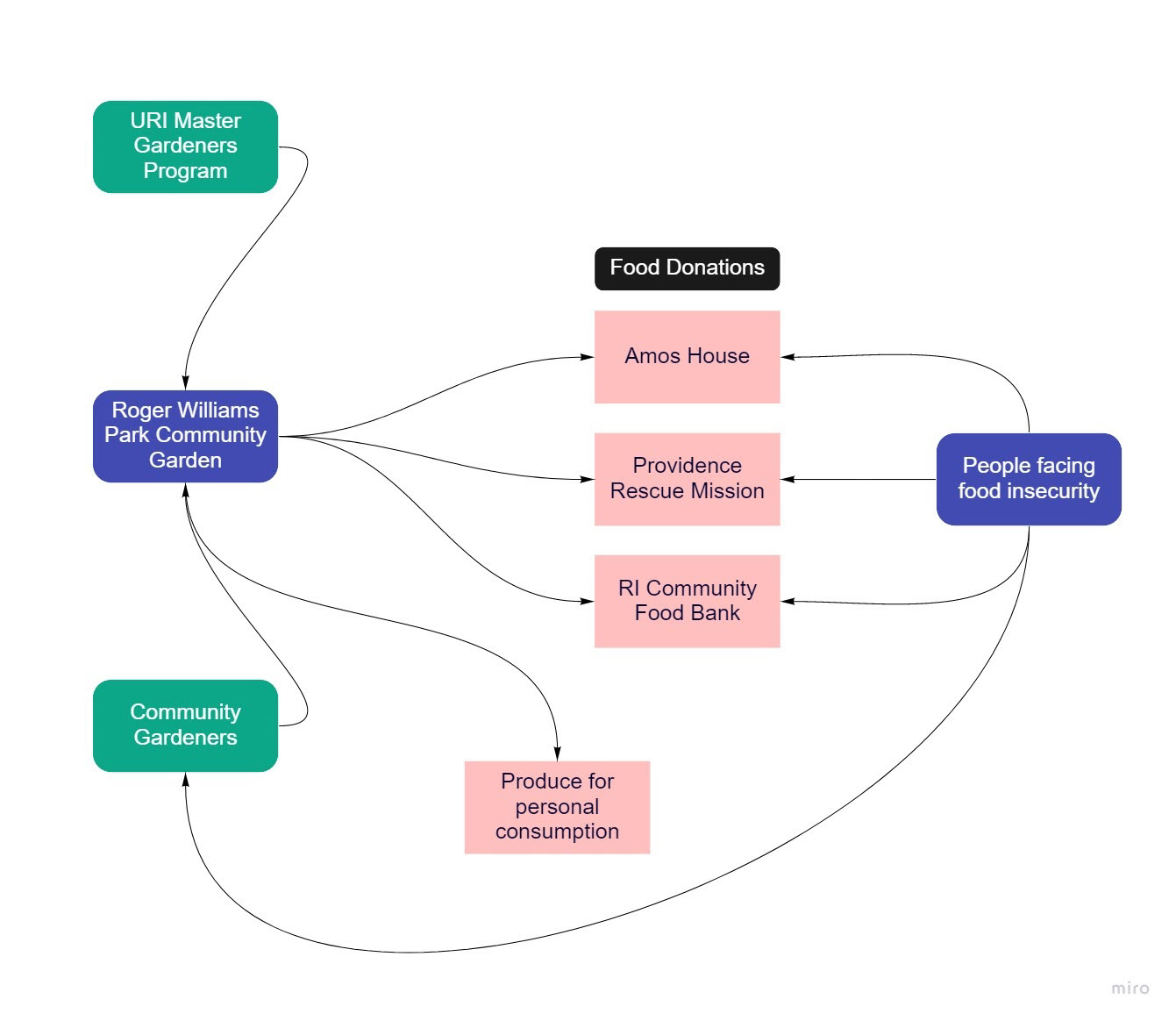
Community Garden System between April- October
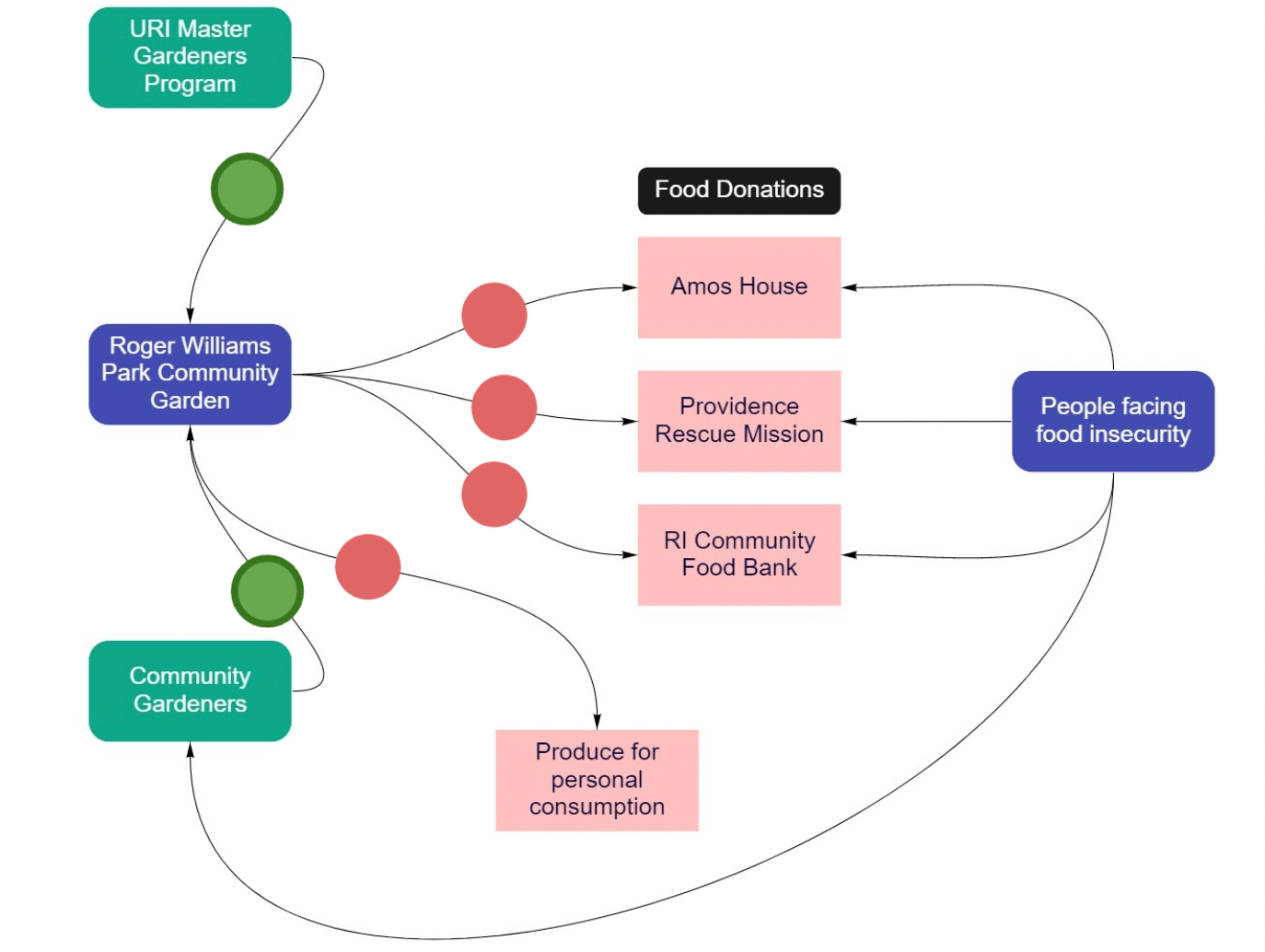
Community Garden System between November- March
Proposed Intervention

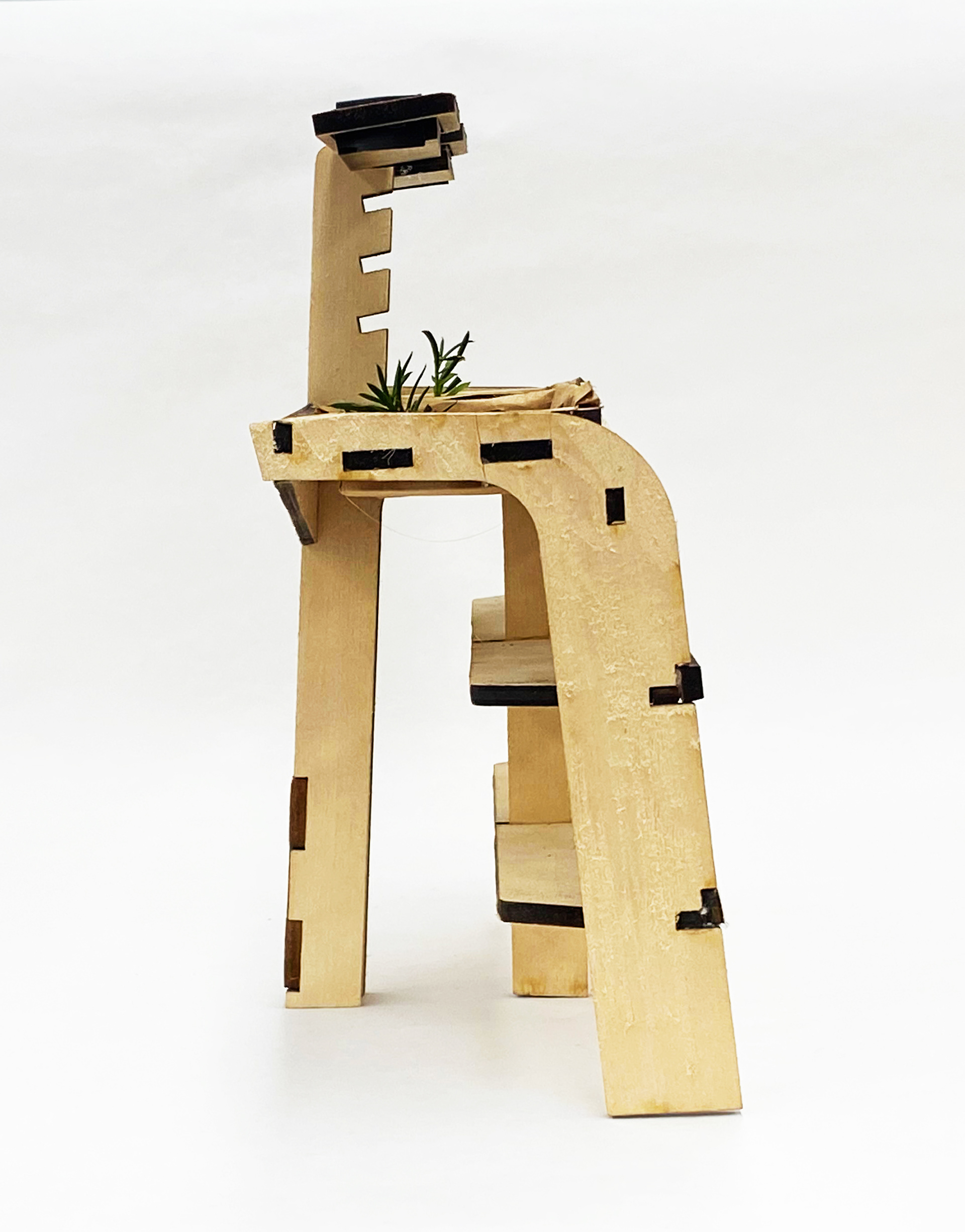

Week 4
We shifted our focus to community gardens and centers and designed a modular indoor gardening kit. With the unit cost of US $173, the EverGreen kit uses an innovative growing technique called "no till" and enables self-sustenance and cultural exchange.
Each of the six containers within the EverGreen kit can grow five gallons of tomatoes, kale, micro greens, and herbs. The produce from the kit can be combined with recipes and cooking classes to promote healthy eating and serves as an educational tool for workshops and volunteer training.
The kit allows food pantries & markets to increase their sales by installing an EverGreen kit in their store to enable a unique customer experience.